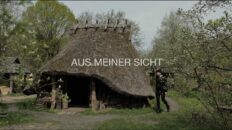Konferenz zum Auftakt der wissenschaftlichen Vorbereitung der Ausstellung „300 Jahre Wiener Porzellanmanufaktur“ 2018 im MAK | 15. und 16.10.2015
11:45 Uhr
Vienna, Florence and Turin: The Du Paquier manufactory and its influence on early Italian porcelain
Andreina d’Agliano, Kuratorin, Porzellanexpertin und -forscherin, Turin
Andreina d´Agliano: Italienische Porzellanexpertin und -forscherin, seit 2000 Porzellanausstellungen in Bern, Wien („Barocker Luxus Porzellan. Die Manufakturen Du Pacquier und Doccia“, Liechtenstein Museum 2005), Rom, Florenz. Publizierte einen Katalog über italienische Porzellansammlungen. Gründungsmitglied der „Amici di Doccia“, zuletzt tätig für die Ausstellung „Fascino e Splendore della porcellana di Torino: Rosetti, Vische, Vinovo, Torino” Fondazione Accorsi,Turin 2015.
► Gesamtes Programm: http://ow.ly/Yn7BY
____________________
Conference on the Start of Academic Preparations for the Exhibition “300 Years of the Wiener Porzellanmanufaktur” in 2018 at the MAK | 15 and 16 October 2015
11:45 a.m.
Vienna, Florence and Turin: the Du Paquier manufactory and its influence on early Italian porcelain (in English)
Andreina d’Agliano, curator, porcelain expert and researcher, Turin
In the first quarter of the XVIII century relations with the Viennese court had been rather important in different Italian principalities and most of the Du Paquier porcelain came to Italy in form of gifts or important purchases. In particular, intuitive political acumen and entrepreneurial spirit were the base for the contacts made by Carlo Ginor1 ( 1702-1757) who was sent in 1737 to Vienna to pay homage to the new rulers of Tuscany, Francis Stephan of Lorraine (1708-1765) and Maria Theresa of Habsburg(1717-1780).In that occasion Ginori had the opportunity to meet the painter Carl Wendelin Anreiter von Zirnfeld (1702-1747) and the kiln technician Giorgio Delle Dori ( in Doccia 1737-1747)who returned with him to Florence .Notable was their influence on the early stylistical and technical development of the new enterprise, which used many motives popular in the Viennese manufactory. In the same year 1737 in Turin the King Carlo Emanuele III of Sardinia (1701-1773) gave to Giorgio Giacinto Rossetti, a maiolica producer in Turin and Lodi, the patents for the establishment of a porcelain factory. The real owner of the factory was in fact count Carlo Giacinto Roero di Guarene (1675-1749), an enlightened aristocrat who in 1728 had acquired through a nominal head the Rossetti maiolica factory. A travel of Rossetti in 1740 to Paris Vienna and Venice and the probable intervention of the ambassador of the King of Sardinia in Vienna, count Malabaila di Canale, brought two archanists and collaborators of Du Paquier, Anton Magner and Jacob Helchis, to leave Vienna in 1741 and reach Turin in great secrecy. The recent identification of archival sources of the Rossetti factory kept in the castle of Guarene, as well as the stylistical and chemical analysis have allowed the identification of different new pieces: in this talk the influence of Du Paquier different patterns on the production of the Ginori and Rossetti factories as well as new attributions will be discussed.
► Detailed Program: http://ow.ly/Yn8bW




